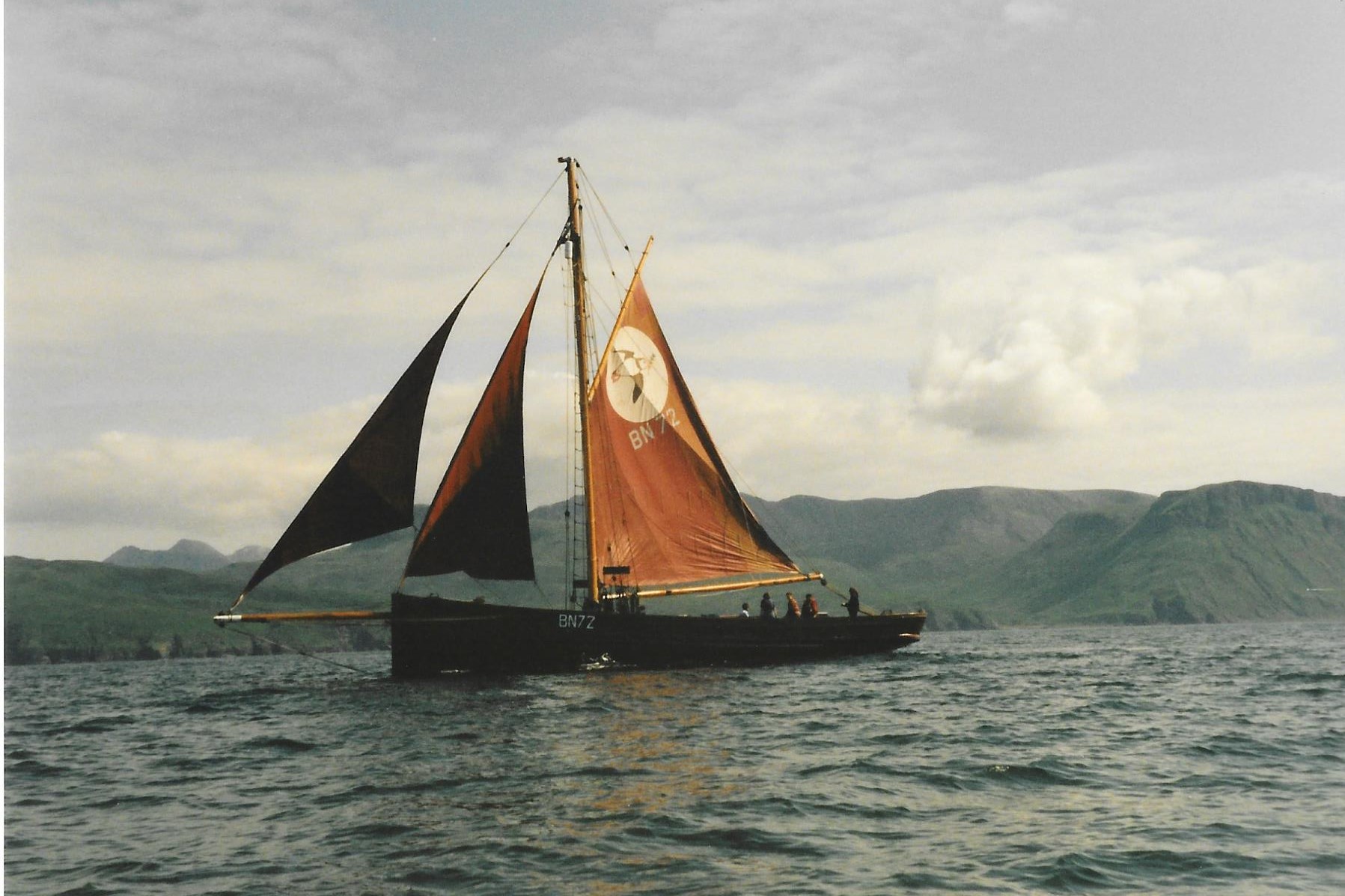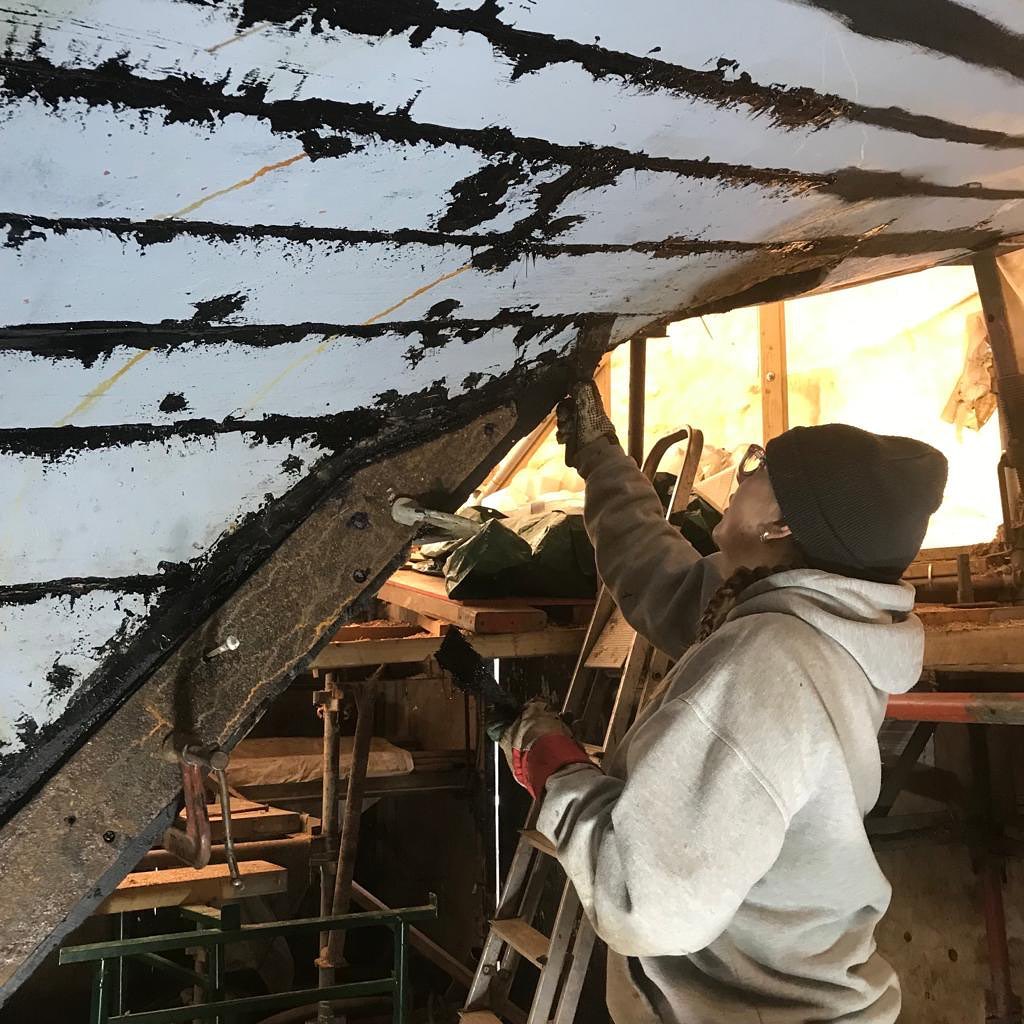
About the Britannia Sailing Trust
The Britannia Sailing Trust is a registered charity founded in 2014, which is dedicated to advancing Britain’s maritime heritage, raising awareness of the fragility of our oceans and providing experience of traditional sailing and maintenance of a historic vessel through the restoration of the Class 1 smack Britannia.
The original purpose of the Britannia Sailing Trust was to repair this beautiful and unique vessel in order for her to sail again, campaigning in the 21st century to protect the oceans that are our planet’s lifeblood. Built more than a hundred years ago, she has seen many changes and had different roles, but her future role may be the most vital. By preserving Britannia, the Trust aims to offer training and work experience for individuals to learn how to sail and maintain a traditional sailing boat, part of Britain’s maritime history.

Britannia's History
The last, and largest, whelk trawler to be built on the east coast, Britannia (now called ‘Spirit of Britannia’ in the official registry) was built for Alfred Rake by his brother-in-law, Walter Worfolk, and his sons, Gerald and William, at King’s Lynn. Worfolk was from a Yorkshire boatbuilding family and had moved to King’s Lynn in 1899. The new vessel was launched from the Friars boatyard on the River Nar on 1 April 1915, and rigged as a gaff cutter. She is believed to have been planked in 2” Archangel redwood fastened with 5” galvanised spikes, and cost £290 exclusive of sails and rigging. Her mast was of 10” diameter pitch pine.
Soon after the launching she ran aground on the Long Sand in the Wash. Her bottom was so fine – she drew 8’ 6” in ballast – that the crew were able to walk ashore along the mast. She was not damaged. During the First World War Britannia had a friendly encounter with a German U-boat. Well to the east of the Sunk buoy she met the submarine on the surface. Some of the German crew came aboard and exchanged a few bottles and some food. The crew of Britannia decided to say nothing of the incident – fraternising with the enemy was frowned upon. In another incident she was caught in the ice when the Ouse froze over in about 1918: food and fuel were taken out to her by improvised sledge. In 1917 Britannia brought home the crew of a Russian ship found in distress and Alfred Rake fed and slept them for some time before they could be repatriated. They departed eventually and nothing more was heard until 1939 when one of the survivors came to King’s Lynn as an officer on a timber ship and got in touch to thank Alfred and his crew.
Later she became a motor fishing vessel. Running aground in fog on a spit in 1968, when going up to Boston Haven, the steep bank caused her to capsize and sink. A fire crew pumped her out but her owners could not afford to put her back into working order. She was sold and taken to Lowestoft for a failed attempt at re-rigging her. In 1973 a carpenter named Haydn Samuels bought her and worked on her restoration at Bristol.
The above history of Britannia was recalled by one of one of Alfred Rake’s grandchildren, who sailed on the trawler in about 1930 as a sort of mascot. The crew brought her shells, exhausted birds (including a government carrier pigeon), a model yacht found at sea, and a young seal which was fed on whelk and lived for several years. In return she would dance and sing for them.
From 1974 to 1997 Britannia was owned and operated by the Samuels family as a charter yacht on the west coast of Scotland under the name Skyes’l Charters. She was then taken to the Hamble, from where she continued to offer sailing holidays.
She was acquired by the Trinity Sailing Trust, of Brixham, in 2007 and underwent a refit in 2008. She was engaged in youth training work and charters, sailing to the Scilly Isles, with berths for ten guests and three crew. In 2011 she was laid up because charter work was scarce and she fell into poor condition. In 2014, Britannia was bought back from Trinity Sailing Trust by her former owners for a symbolic £1. Britannia Sailing Trust was formed for the purpose of saving Britannia and restoring her to seaworthy condition. She was transported 20 miles inland to a purpose-built workshed where a team of volunteers, led by boatbuilder Sam Samuels, worked on her.
The Future for Britannia

Having completed the shore-based phase of her restoration, Britannia was sucessfully relaunched in Exeter in 2023. She is currently undergoing further work while afloat, including interior fit-out, re-stepping of her mast and re-rigging, and recommissioning as a commercial vessel. She is expected to begin seatrials in 2024-2025 before returning to a working life at sea. All the work so far has been completed by a volunteer team aged 18-88, including the two young trainees from their traineeship programme.
With Britannia Sailing Trust at the helm, Britannia's new purpose will be to undertake a wide variety of adventurous, imaginative, life-changing voyages focused on:
— Preserving traditional boatbuilding, sailing and maritime skills;
— Helping disadvantaged people or those facing hardship;
— Environment and sustainability, with a particular focus on the marine and coastal environment as well as traditional ship-building's vital links to Britain's native woodlands;
— Supporting a new generation of traditional shipwrights and sailors through our young traineeship programme, which employts disadvantaged youths interested in working in the maritime and supports them to learn endangered traditional skills.
In the course of these voyages, Britannia will traverse the coastline of the whole of the British isles, visiting areas where economic and social deprivation is higher than average and engaging with disadvantaged groups in deprived coastal communities.
The Trust welcomes any contributions which will help them to save this historic vessel. All labour, skilled and otherwise is voluntary; admin costs and overheads too are covered, so every penny they raise goes directly to Britannia, her restoration and her mission.
Find out more:
Follow them on social media:



